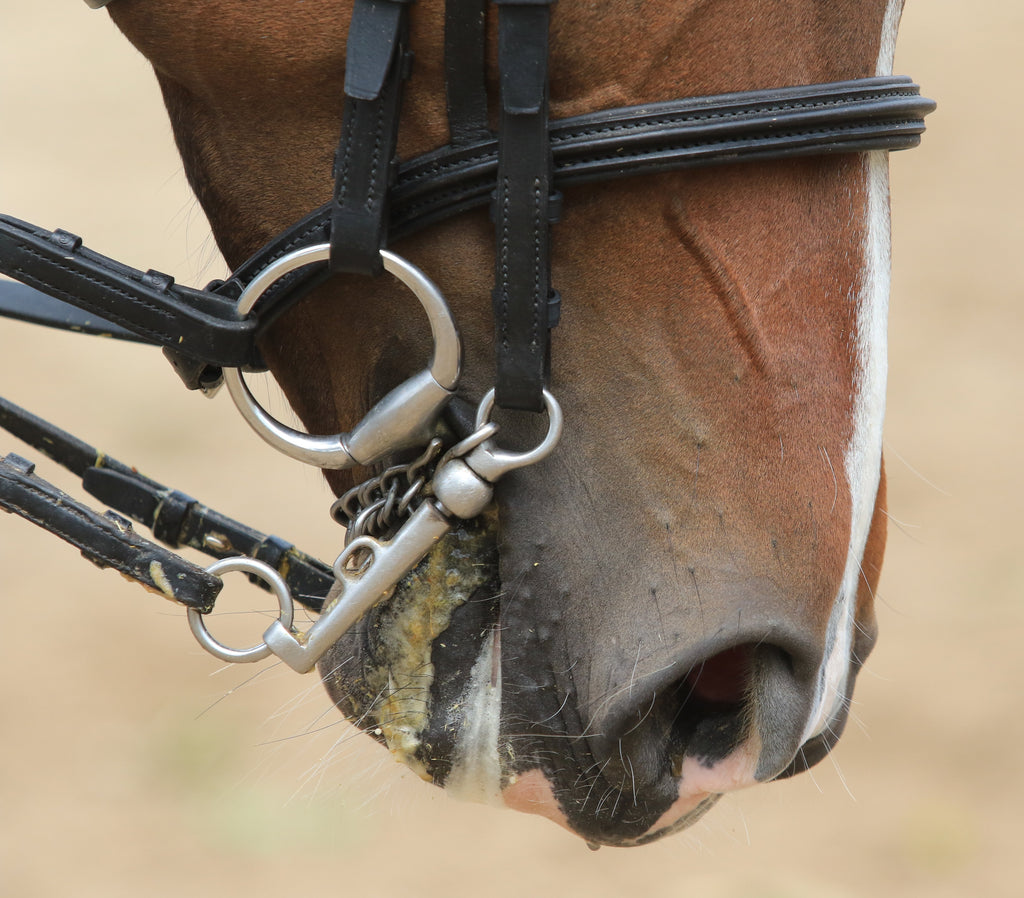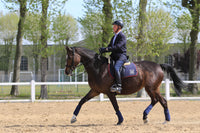- Introduction to horse riding
Horse riding is not just a hobby; it is an art form that requires skill, patience, and dedication. Whether you are a beginner or have some experience in the equine world, there is always room for improvement in horse riding. Learning to control your horse's speed and direction, mastering different riding techniques, and building a strong partnership with your horse are just a few of the essential skills needed to become a skilled rider. If you are new to horse riding or looking for ways to enhance your skills, this blog post will provide you with 10 essential tips for beginners to help you master the art of horse riding.
- The importance of proper equipment and attire
When it comes to horse riding, having the right equipment and attire is crucial. Not only does it ensure your safety, but it also improves your overall riding experience.
Investing in a well-fitting helmet is a non-negotiable. It protects your head from potential injuries and should be worn at all times when mounted. Additionally, proper riding boots with a slight heel and suitable half-chaps or tall boots provide necessary stability and support.
Choosing the right saddle is equally important. Make sure it fits both you and the horse properly, as an ill-fitting saddle can cause discomfort or even harm to both of you.
Lastly, wearing appropriate clothing, such as helmet-friendly hair ties, comfortable and fitted pants or jodhpurs, and breathable shirts, enables freedom of movement and prevents any distractions during your rides.
Remember, investing in the right equipment and attire is an investment in your safety and enjoyment of the art of horse riding.

- Developing a strong foundation: mastering the basics
While having the right equipment and attire is vital, developing a strong foundation in horse riding begins with mastering the basics. It is crucial for beginners to focus on building their core strength, balance, and coordination.
Start by taking lessons from a certified instructor who can guide and teach you the proper technique and form. They will assist you in developing an effective seat, correct hand position, and precise leg aids that communicate with the horse.
Practicing basic exercises, such as mounting and dismounting, walking, and halting, will help you gain confidence and establish a solid foundation. Additionally, learning how to steer, transition between gaits, and maintain a correct riding position are essential skills that will set you on the path to becoming a proficient rider.
Remember, mastering the basics is the key to progressing in your horse riding journey. With time, patience, and dedication, you will pave the way to becoming a skilled and confident equestrian.
- Building trust and communication with your horse
Building trust and effective communication with your horse is crucial for a successful riding experience. Horses are highly intuitive animals that can sense even the slightest change in your mood or body language.
To build trust, spend time bonding with your horse outside of riding sessions. Grooming, feeding, and simply spending quality time with your horse can help establish a strong connection. Treat your horse with kindness, respect, and consistency, and they will gradually build trust in you as their rider.
Communication is key in horse riding. Learn to read your horse's body language and understand their cues. Pay attention to their ears, eyes, and overall demeanor to gain insight into their feelings and intentions. Additionally, using clear and consistent aids, such as your voice, hands, and legs, will enable effective communication during your ride.
By building trust and communication with your horse, you will create a solid foundation for a harmonious and enjoyable partnership.

- The significance of proper posture and body alignment
Maintaining proper posture and body alignment is essential for both your safety and the well-being of your horse. When riding, it is important to sit tall with your shoulders back and down, and your core engaged. This allows for better balance and stability, helping you communicate more effectively with your horse.
Proper body alignment also helps distribute your weight evenly across your horse's back, preventing discomfort or injury. Your legs should be relaxed with heels down and toes pointed slightly outwards. This position enables you to maintain a secure and balanced seat.
Consistency is key when it comes to maintaining correct posture. Practice regularly and be mindful of your body position during every ride. Over time, it will become second nature, and you will feel more connected and in control.
Remember, mastering the art of horse riding is a journey that requires patience and dedication. By focusing on proper posture and body alignment, you are setting yourself up for success and a more enjoyable riding experience.
- Learning to control your horse's speed and direction
Once you have mastered the basics of maintaining proper posture and body alignment, it is time to learn how to control your horse's speed and direction. This is essential for both your safety and the overall enjoyment of your horse riding experience.
To control your horse's speed, you must learn how to use your reins effectively. Start by familiarizing yourself with the different rein aids, such as direct rein, indirect rein, and supporting rein. These aids will allow you to communicate with your horse and ask for changes in speed, whether it is slowing down, stopping, or increasing speed.
To control your horse's direction, you will need to learn how to use your legs and seat effectively. Your legs can be used to guide your horse's movements and encourage them to move in a certain direction. Your seat, in combination with your leg aids, can help you communicate the direction you want your horse to go.
Remember to be patient with yourself and your horse as you learn these skills. It takes time and practice to develop a confident and effective communication with your horse. By mastering these skills, you will be able to navigate different terrains and confidently ride in a variety of settings.
- The art of balance and coordination in horse riding
Balancing and coordinating your movements while horse riding are crucial for maintaining stability and developing a strong connection with your horse. This requires a combination of core strength, flexibility, and focus.
To improve your balance, practice exercises such as standing on one leg and yoga poses that target your core muscles. These exercises will help you maintain a steady and centered position in the saddle.
Coordinating your movements with your horse is equally important. Pay attention to your horse's rhythm and try to move in sync with their movements. This will allow you to effectively communicate with your horse and maintain a harmonious partnership.
In addition, practicing transitions between different gaits and movements will help you develop coordination and fluidity in your riding. Start with simple transitions, such as walking to trotting, and gradually progress to more advanced movements.
By mastering the art of balance and coordination, you will not only enhance your riding skills but also build a deeper bond with your horse. Keep practicing and honing these essential skills for a smooth and enjoyable horse riding experience.
- Overcoming fear and building confidence
Overcoming fear and building confidence is a significant aspect of becoming a skilled horse rider. It's natural for beginners to feel nervous or apprehensive when first getting on a horse, but with the right mindset and strategies, you can conquer these fears and develop a sense of confidence in the saddle.
One effective approach is to start by working with a calm and well-trained horse. This will help build your trust in the animal as you become more familiar with its behavior and movements. Additionally, taking lessons from a qualified instructor who specializes in working with beginners can provide you with the guidance and support you need to feel more secure.
A gradual progression is also key to building confidence. Begin with simple and familiar exercises, avoiding any overly challenging tasks until you feel more at ease. Slowly push your boundaries as you develop your skills and comfort level.
Remember to stay positive and give yourself credit for each small achievement. Celebrate the milestones along the way, whether it's successfully conquering a fear or mastering a new skill. With time and practice, your confidence will grow, and you'll feel more comfortable taking on new riding challenges.
Stay tuned for the next section, where we'll explore the importance of a proper riding position and how it contributes to a successful horse riding experience.
- Understanding and respecting your horse's behavior and needs
Understanding and respecting your horse's behavior and needs is crucial for becoming a skilled horse rider. Horses are intelligent and sensitive animals, and having a deep understanding of their natural instincts and communication signals will greatly enhance your riding experience.
Take the time to observe your horse's body language and learn to interpret their different movements and expressions. This will help you anticipate their reactions and respond accordingly, ensuring a safe and harmonious ride. Additionally, familiarize yourself with basic horse psychology, such as their herd dynamics and flight or fight responses.
Meeting your horse's needs is equally important. Provide proper nutrition, a clean and comfortable living environment, and regular exercise to ensure their physical and mental well-being. Develop a bond with your horse through grooming, spending quality time, and building trust.
By understanding and respecting your horse's behavior and needs, you'll develop a stronger connection with your equine partner and become a more proficient rider. Stay tuned for the final section, where we'll discuss the importance of perseverance and continuous learning in mastering the art of horse riding.
- Continuous learning and improvement in horse riding
Continuing to learn and improve is essential for mastering the art of horse riding. Riding is a skill that requires ongoing practice and refinement.
One way to continue learning is by seeking out professional instruction. Working with a knowledgeable and experienced riding instructor can provide valuable guidance and feedback. They can help correct any bad habits or incorrect techniques that you may have developed and offer new strategies to enhance your riding skills.
Another way to improve is by regularly setting goals for yourself. Whether it's mastering a specific riding maneuver or improving your overall balance and control, setting goals helps you stay focused and motivated. Break down larger goals into smaller, achievable steps and track your progress along the way.
Remember to also learn from each riding experience. Reflect on what went well and what could be done differently. Embrace constructive criticism and use it as an opportunity to grow as a rider.
By committing to a mindset of continuous learning and improvement, you'll take your horse riding skills to new heights and truly master the art of horse riding.
- Conclusion: Embark on your journey to become a skilled horse rider
Conclusion: Embark on your journey to become a skilled horse rider
Embarking on the journey of mastering the art of horse riding is an exciting and rewarding endeavor. By following these essential tips for beginners, you are setting yourself up for success. Remember to start with the basics, focus on building a strong foundation, and take the time to develop proper riding techniques and skills.
Seeking professional instruction and setting goals will help you continue learning and improving. Embrace every riding experience as an opportunity to grow and reflect on what you can do better. With a mindset of continuous learning and improvement, you will take your horse riding skills to new heights and become a skilled and confident rider.
So, put on your riding boots, saddle up, and enjoy the incredible journey ahead. Happy riding!






